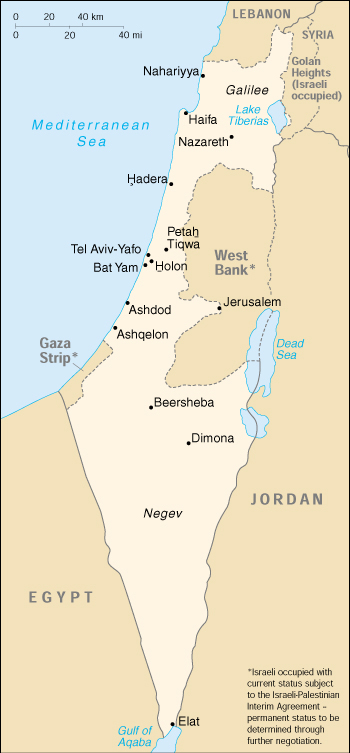

Status Quo Side: Israel
Non-Status Quo Side: Syria/Jordan
Region: Middle East
Conflict Type: Interstate
Issues in Dispute: Resources
In 1923, during the years of British hegemony, the entire upper Jordan River was awarded to Palestine. The river arises from springs and intermittent streams located in southern Syria. For Jordan, the river is vital. Syria's attempts to change the status quo in 1948 resulted in 1949 in agreed demilitarized zones. [see PAL]
One of the demilitarized zones became the site of a near-violent water-related dispute. With the intervention of the UN and US, violence was averted. In the early sixties, Syria and Jordan attempted to divert the river around Israel. Israeli soldiers intervened to prevent the diversion. A US mission failed to persuade Israel, Lebanon, Syria and Jordan to agree on a water-sharing formula covering the entire Jordan Rift Valley, and including a dam in Jordan. Water issues were at the root of the 1967 war during which Israel was able to gain military control of sections of the headwaters [see AIW]. US diplomacy in the early 1980's sought Israeli and Jordanian cooperation to support a Jordanian dam on the Yarmuk to be built on the boundary between Syria and Jordan. The initiative foundered in the absence of Syrian participation. The 1987 treaty between Syria and Jordan permitted Syria to construct small earth dams along streams feeding the Yarmuk river in return for Syrian support of the so-called Unity Dam. Agreement between Israel and Jordan foundered over the realization that Syria's diversion of water was much greater than expected and jeopardized the dam's feasibility. The probability that the new Palestinian authority would claim the right of countries downstream of aquifers to share a common resource with upstream countries underlined the need for a comprehensive solution.